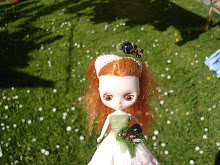Radiation/The Arms Race/Disasters
Was just reminded today of one of the topics I find perenially fascinating. This site is the story of Elena, a motorbike rider whose favourite destinations leads her North from Kiev, towards the Chernobyl "dead zone".
A lot of people my age have strong memories of that 80s nuclear/radiation fear. I did a school project with all the half lifes of various radioactive elements based around an article in the Southland Times about what would happen if a bomb hit Invercargill.
Remember
- Threads - the British tv series
- The Day After
- and Edge of Darkness - one of the best tv series ever. It starred Bob Peck as a policeman trying to find out what killed his activist daughter. I've got the dvd.
I read this book earlier this year The radioactive boy scout : the true story of a boy and his backyard nuclear reactor by Ken Silverstein. Growing up in suburban Detroit, David Hahn was fascinated by science, and his basement experiments - building homemade fireworks, brewing moonshine, and concocting his own self-tanning lotion - were more ambitious than those of other boys. While working on his Atomic Energy badge for the Boy Scouts, David's obsessive attention turned to nuclear energy. Throwing caution to the wind, he plunged into a new project: building a nuclear breeder reactor in his backyard garden shed.
David solicited information on reactor design from the U.S. government and from industry experts. (Ironically, the Nuclear Regulatory Commission was his number one source of information.) Scavenging antiques stores and junkyards for old-fashioned smoke detectors and gas lanterns - both of which contain small amounts of radioactive material - and following blueprints he found in an outdated physics textbook, David cobbled together a crude device that threw off toxic levels of radiation. His unsanctioned and wholly unsupervised project finally sparked an environmental catastrophe that put his town's forty thousand residents at risk and caused the EPA to shut down his lab and bury it at a radioactive dumpsite in Utah.
Earlier in the year I read a whole series of books about disasters:
- Ablaze: the story of the heroes and victims of Chernobyl by Piers Paul Read
- We wish to inform you that tomorrow we will be killed with our families : stories from Rwanda by Philip Gourevitch. I haven't seen the movie "Hotel Rwanda" yet but the same guy is mentioned in here. It is devastating reading.
- Five past midnight in Bhopal by Dominique Lapierre and Javier Moro. I didn't know much about this before reading the book. In 1984 a cloud of toxic gas escaped from Union Carbide, the American pesticide plant in the Indian city of Bhopal, killing 16,000-30,000 and injuring half a million people.
- A time to die : the Kursk disaster by Robert Moore. At 10.30am on Saturday August 12, 2000, two explosions shook the icy Artic waters of the Barents Sea. One of the largest and most technologically advanced nuclear subs in the world, carrying a crew of 118 Russian sailors, had rapidly crashed to the ocean floor..


0 Comments:
Post a Comment
Subscribe to Post Comments [Atom]
<< Home